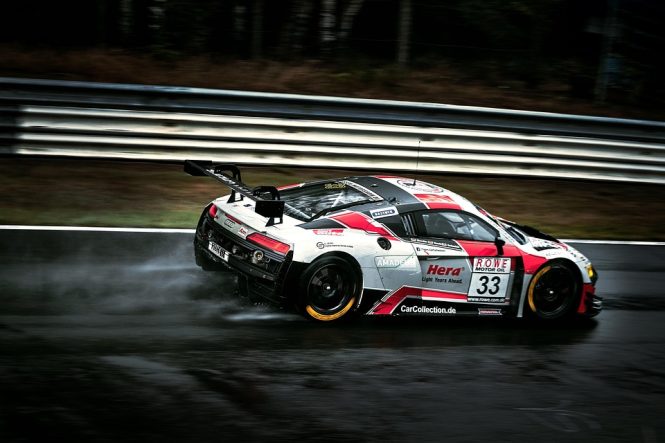
The Evolution of Race Tracks: From Ovals to Street Circuits
The world of motorsports has undergone a significant transformation over the years, with one of the most notable changes being the evolution of race tracks. From the traditional oval-shaped tracks to the modern street circuits, the design and layout of racing venues have played a crucial role in shaping the sport. In this article, we will delve into the history of race tracks, exploring their development and the factors that have influenced their evolution.
The Early Days: Oval Tracks
In the early 20th century, racing was primarily held on oval-shaped tracks, which were often built on existing horse racing tracks or dirt roads. These tracks were simple, with a single lane and no grandstands. The first oval track, the Indianapolis Motor Speedway, was built in 1909 and hosted the first Indianapolis 500 in 1911. Oval tracks were popular in the United States, where stock car racing and NASCAR (National Association for Stock Car Auto Racing) dominated the motorsport landscape.
Oval tracks were ideal for high-speed racing, with drivers reaching speeds of over 200 miles per hour on the straights. However, they were also criticisms of being too simplistic, with drivers often relying on brute force rather than strategy and skill. As the sport evolved, there was a growing demand for more challenging and technical tracks that would test drivers’ skills and provide more exciting racing for spectators.
The Introduction of Road Courses
In the 1950s and 1960s, road courses began to emerge, offering a more challenging and complex layout for drivers. These tracks were designed to mimic the twists and turns of public roads, requiring drivers to brake, accelerate, and corner with precision. The iconic Nürburgring circuit in Germany, built in 1927, was one of the first road courses to gain international recognition. The circuit’s challenging layout, featuring over 150 turns, quickly became a favorite among drivers and fans alike.
Road courses introduced a new level of complexity to motorsport, with drivers needing to master a range of skills, including braking, cornering, and acceleration. The addition of chicanes, hairpins, and other features made racing more strategic, with drivers needing to conserve tires, manage fuel consumption, and navigate through traffic.
The Rise of Street Circuits
In the 1970s and 1980s, street circuits began to gain popularity, particularly in urban areas. These tracks were designed to bring racing to the heart of cities, with the aim of attracting new fans and creating a more accessible and spectator-friendly sport. The Monaco Grand Prix, first held in 1929, is one of the most famous street circuits, with its narrow streets and iconic harbor-side location.
Street circuits offered a unique challenge for drivers, with narrow roads, tight corners, and variable surfaces. The absence of grandstands and natural spectator areas meant that fans could watch the action from the side of the track, creating a more intimate and immersive experience. The success of street circuits like Monaco, Singapore, and Melbourne led to the development of new urban tracks, with cities like Austin, Texas, and Sochi, Russia, hosting Formula 1 and other top-level racing events.
Modern Developments: Hybrid and Temporary Tracks
In recent years, the evolution of race tracks has continued, with the introduction of hybrid and temporary tracks. Hybrid tracks combine elements of oval and road courses, offering a unique challenge for drivers. The Texas Motor Speedway, built in 1996, is an example of a hybrid track, featuring a combination of high-speed straights and technical turns.
Temporary tracks, built specifically for a single event, have become increasingly popular. These tracks are often constructed on public roads or in large public spaces, such as airports or parks. The Circuit Gilles Villeneuve in Montreal, Canada, is a temporary track built on a man-made island in the Saint Lawrence River. Temporary tracks offer a unique and exciting experience for drivers and fans, with the advantage of being able to create a bespoke layout for a specific event.
Conclusion
The evolution of race tracks from ovals to street circuits has been a long and winding road, shaped by advances in technology, changing fan preferences, and the need for increased safety and excitement! From the early days of oval tracks to the modern street circuits and hybrid tracks, the design and layout of racing venues have played a crucial role in shaping the sport. As motorsport continues to evolve, it will be exciting to see how tracks are designed and built in the future, and how they will continue to challenge and thrill drivers and fans alike.
The future of race tracks is likely to be shaped by several factors, including advances in technology, environmental concerns, and the need for increased sustainability. The use of simulators and virtual reality technology may become more prevalent, allowing drivers to practice and test on virtual tracks. The development of electric and hybrid racing cars may also influence track design, with a focus on energy efficiency and reduced environmental impact.
One thing is certain, however: the evolution of race tracks will continue to be driven by the passion and creativity of motorsport enthusiasts, and the need to create exciting and challenging racing experiences for drivers and fans alike.